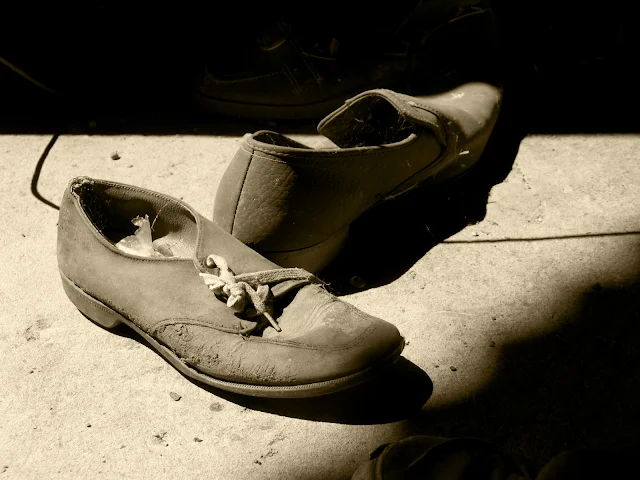It is time to throw away two old things, linked to each other, that mankind has dragged on from prehistory: animal flesh and leather.
Let's start with the second, in a dramatic market crisis. From $ 74 a piece two years ago to the 27 of today, this was the collapse of the US cattle' hides, imitated by the rest of the world. Too many stocks, qualities that will get even worse, even thrown into landfills. China buys less, on the leather for cars and luxury shoes wins the competition of the synthetic, the widespread environmental regulations discourage investment and transformation of this raw material. (drovers.com / July 29,2019)
Despite French efforts to preserve its profitable status symbol image, less elderly consumers are giving up, if only for inflated prices. And the first tanning sector to suffer from it is the Italian one, in which the smaller companies barely survive or close and the major tanneries move to foreign properties.
This is happening despite the consumption of meat (200 kg per capita in the USA, 7 kg in Ethiopia). By 2050 it could double. It would be a catastrophe for environmentalists: worsening of the condition of animals, additional degradation of water, land and air.
In vitro meat, veganism, slow meat promotion are some suggested solutions. (slowfood.com /Aug.26,2019)
The most radical remedy comes from German parliamentarians. They ask for 19% tax on meat from the current 7%. Denmark and Sweden want to do the same. The largest carnivores are Americans, Australians, New Zealanders, Argentines.
Deforestation to make room for farming and grazing, as happens in the Amazon, is the main source of carbon production and release into the atmosphere.
By now, meat is seen as a burden, a sort of planetary tax, as well as a probable cause of 220,000 deaths per year. (thehill.com /Aug.24, 2019)
Now that the power relations in communication are turning in favor of diets or poor of meat or meatless, studies confirming physical and economic harmfulness flourish. A research on 12,000 adults lasting 29 years, published by the Journal of the American Heart Association, concludes that eating 4-5 servings a day of vegetables (vegetables, nuts, whole grains, fruits, legumes) and less than one serving of red meat a day reduces the risk of death by 18-25% compared to those who habitually take it.
Olive oil, blue fish such as salmon, yogurt, chicken, cheese, beans belong to the healthiest diet; while sugar and white bread are added to the harmful one. (insider.com /Aug.24, 2019)
Due vecchie cose
E' tempo di buttare due vecchie cose, tra loro legate, che il genere umano si trascina dalla preistoria: carne e pelle animali.
Cominciamo dalla seconda, in una drammatica crisi di mercato. Dai 74 dollari a pezzo due anni fa ai 27 di oggi, questo è stato il crollo del grezzo bovino statunitense, imitato dal resto del mondo. Troppe scorte, qualità che peggiorerà ancora, buttate persino in discarica. La Cina ne compra meno, su pelle per automobili e scarpe di lusso vince la concorrenza del sintetico, le diffuse normative ambientali scoraggiano investimenti e trasformazione di tale materia prima. (drovers.com /July 29,2019)
Nonostante gli sforzi francesi per conservarne la redditizia immagine di status symbol , i consumatori meno anziani la stanno mollando, se non altro per i prezzi gonfiati. E il primo settore conciario a soffrirne è quello italiano, nel quale le aziende minori vivacchiano o chiudono e le concerie maggiori passano a proprietà straniere.
Cosa che sta avvenendo nonostante il consumo di carne cresca (200 kg pro-capite in USA, 7 kg in Etiopia). Entro il 2050 potrebbe raddoppiare. Sarebbe una catastrofe per gli ambientalisti: peggioramento della condizione delle bestie, degrado aggiuntivo di acqua, terra, aria.
Carne in vitro, veganismo, promozione della slow meat costituiscono alcune soluzioni suggerite. (slowfood.com /Aug.26,2019)
Il rimedio più radicale proviene da parlamentari tedeschi. Chiedono tasse sulla carne al 19% dall'attuale 7%. Danimarca e Svezia vogliono fare lo stesso. I maggiori carnivori sono americani, australiani, neozelandesi, argentini.
La deforestazione per fare posto ad allevamento e pascolo, come accade in Amazzonia, è la fonte principale di produzione e rilascio carbonio in atmosfera.
Ormai, la carne viene vista come un onere, una sorta di imposta planetaria, oltre che probabile causa di 220.000 decessi anno. (thehill.com /Aug.24, 2019)
Adesso che i rapporti di forza nella comunicazione stanno volgendosi a favore delle diete o povere o prive di carne, gli studi di conferma della nocività fisica ed economica fioriscono. Uno recente, durato 29 anni su 12.000 adulti, pubblicato da Journal of American Heart Association, conclude che mangiare 4-5 dosi al giorno di vegetali (verdure, noci, cereali integrali, frutta, legumi) e meno di una porzione al giorno di carne rossa riduce del 18-25% il rischio di morte rispetto a chi la assume abitualmente.
All'alimentazione più sana appartengono pure olio d'oliva, pesce azzurro come il salmone, yogurt, pollo, formaggi, fagioli; mentre a quella dannosa vengono aggiunti zucchero, pane bianco. (insider.com /Aug.24, 2019)

Comments
Post a Comment